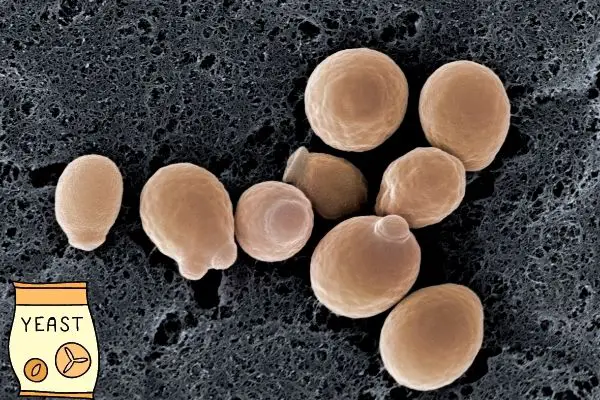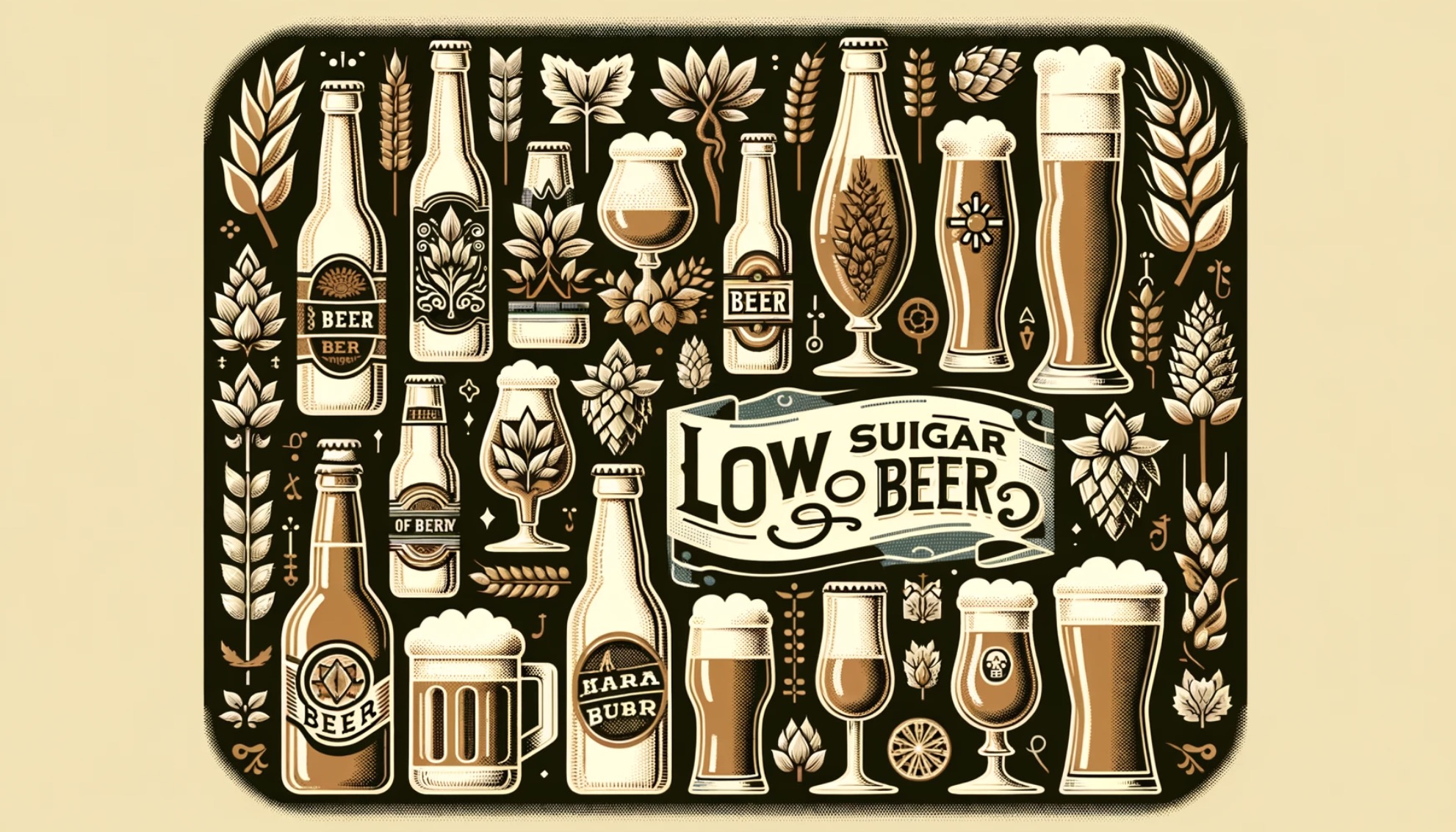When it comes to brewing cider, most people typically use champagne yeast or cider yeast. But what about using ale yeast for cider brewing? Is it possible? Ale yeast is widely used for brewing beer, but can it be used for fermenting hard cider? In this blog post, we will explore whether or not ale yeast is a viable option for those who want to try something different in their cider-making process. Let’s dive in and discover if we can use ale yeast for cider brewing.
Can Ale Yeast be Used for Cider Brewing?
Yes, ale yeast can definitely be used for cider brewing. In fact, it is not uncommon to use ale and lager yeasts to make hard cider. Although beer yeasts are less alcohol tolerant than wine yeasts, they bring a wider range of flavors to the table. One of the favorites is Safale US-05, which is commonly used for ales but can also create great tasting cider.
Another option is Nottingham Ale Yeast which is known for its semi-sweet cider characteristics. It’s important to note that if a cider has preservatives like sorbate, or other preservatives besides vitamin C, it won’t ferment regardless of the yeast strain used.
In the end, the choice of yeast strain is entirely up to the brewer, as it can play a crucial role in creating unique and complex flavor profiles for the cider.
Beer Yeasts for Cider: Differences and Similarities
When it comes to choosing a yeast for cider brewing, beer yeasts can be a viable option. While both beer and cider are fermented using yeast, there are key differences in the strains that are best suited for each.
Beer yeasts tend to produce more complex and nuanced flavors in cider, whereas cider yeasts may result in a sweeter finished product.
It’s important to note that alcohol tolerance may be an issue with beer yeasts in cider, as most beer yeasts are less tolerant than wine yeasts. However, experiments conducted by the Home Brew Association have shown that different yeasts can make a significant difference in the flavor profile of the final product, so it may be worth experimenting with different strains.
Ultimately, it’s important to choose a yeast that will complement the desired flavor profile of the cider.
Characteristics of Nottingham Ale Yeast for Cider
When it comes to cider brewing, Nottingham Ale yeast is a popular choice for homebrewers. Known for its clean profile and versatile nature, this strain can produce a range of cider styles, from dry to semi-sweet.
Additionally, Nottingham Ale yeast has a high attenuation rate, meaning it will consume sugars more efficiently, resulting in a higher alcohol content in the finished product. However, it’s important to note that the flavor profile of Nottingham Ale yeast may not be the best option for those seeking a fruitier or more complex cider flavor.
Overall, Nottingham Ale yeast can be a reliable choice for cider brewing, but as with any yeast strain, it’s important to experiment and find the perfect fit for your desired style and flavor profile.
Alcohol Tolerance of Ale Yeast in Cider
Ale yeast can be a viable option for cider brewing, but it’s important to consider its alcohol tolerance level. While ale yeast typically has a lower tolerance for alcohol than wine yeast, it can still produce a cider with an ABV around 6-8%.
It’s important to note that pushing ale yeast too far beyond its alcohol tolerance can result in off-flavors and a stuck fermentation. Additionally, it’s worth considering the desired ABV of the final product when choosing a yeast strain for cider.
Overall, ale yeast can be a suitable option for cider brewing, but it’s important to consider its limitations and potential effects on the final product.
Flavor Profiles of Hard Ciders and Yeast Strains
Yeast strains have a significant impact on the flavor profiles of hard ciders. When choosing a yeast strain for cider brewing, it’s important to consider the specific characteristics of each strain. Beer yeast, for example, can add more complex and nuanced flavors to cider than cider yeast, which is often more subdued.
Similarly, different ale yeast strains can contribute unique flavors to cider, such as fruity and estery notes. However, it’s essential to keep in mind that each strain will have its own attenuation issues, alcohol tolerance, and flavor profiles.
It’s also important to experiment with different strains to find the perfect fit for your desired flavor profile. With the right yeast strain, a cider maker can create a delicious, well-balanced, and unique hard cider.
Nine Pin Belgian: a Cider Yeast Option
If you are looking for a unique and flavorful cider yeast option, the Nine Pin Belgian cider may be an excellent choice. This cider is made from a farmhouse blend of local apples and fermented with a Belgian Abbey Ale yeast.
This combination creates a cider that not only has an alcohol tolerance of 12% ABV or higher but also invokes the characteristics of a preferred Belgian-style apple beverage. The Nine Pin Ciderworks in Albany, New York, uses this yeast in their production, and it can also be purchased for home brewing at Adventures in Homebrewing.
This Belgian cider yeast option adds another dimension to the diverse range of yeast strains available for cider brewing.
Attenuation Issues with Yeast in Cider Brewing
Attenuation issues are one of the major considerations when selecting a yeast strain for cider brewing. Yeast attenuation refers to how much of the fermentable sugars in the cider the yeast can consume during the fermentation process.
Some strains of yeast have a high attenuation rate, meaning that they can convert most of the sugar into alcohol, resulting in a dry, tart cider. On the other hand, yeasts with a lower attenuation rate will leave more residual sugar in the cider, resulting in a sweeter taste. Therefore, it’s recommended to choose a yeast strain with the desired attenuation level that complements the cider’s flavor profile.
It’s crucial to note that if the yeast does not consume all of the fermentable sugars, there is a risk of refermentation in the bottles, which could cause carbonation or even explosions. Hence, it’s necessary to measure the original and final specific gravity of the cider to ensure that the yeast has reached its maximum attenuation level.
Best Yeast Strains for Semi-Sweet Cider
When it comes to brewing semi-sweet cider, selecting the right yeast strain is crucial to achieving the desired flavor profile. While there are several options available, some stand out as the best yeast strains for this type of cider.
For instance, Lalvin D47 yeast is a popular choice as it produces a soft, fruity aroma with a balanced finish. Another highly recommended option is Wyeast 4766, which imparts a rich, full-bodied flavor with subtle notes of vanilla and spice. In contrast, White Labs English Cider yeast is known for its crisp, clean taste and ability to yield higher alcohol content.
Overall, finding the best yeast strains for semi-sweet cider largely depends on personal preferences and experimentation with different varieties.
References
- https://www.homebrewtalk.com/threads/ale-yeast-in-cider.139034/
- https://www.thehomebrewforum.co.uk/threads/ale-yeast-for-cider.65753/
- https://diyhardcider.com/hard-cider-yeast/
- https://byo.com/article/yeast-selection-for-cider/




